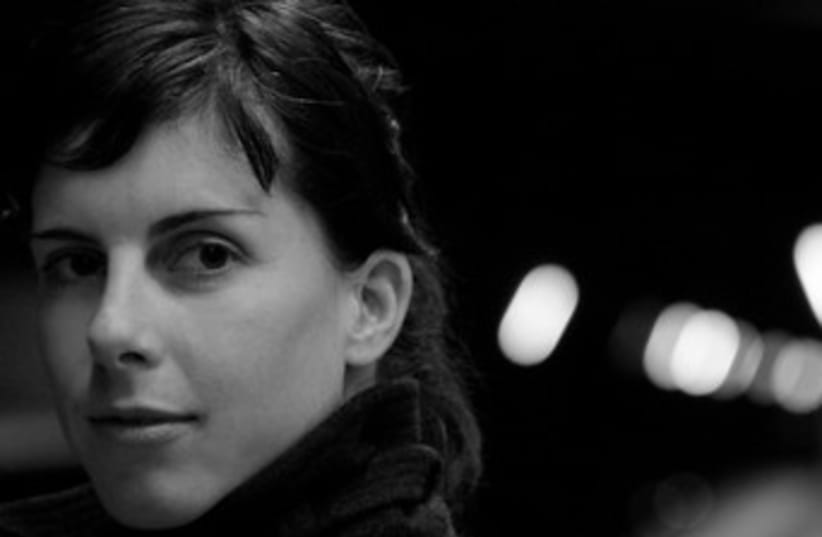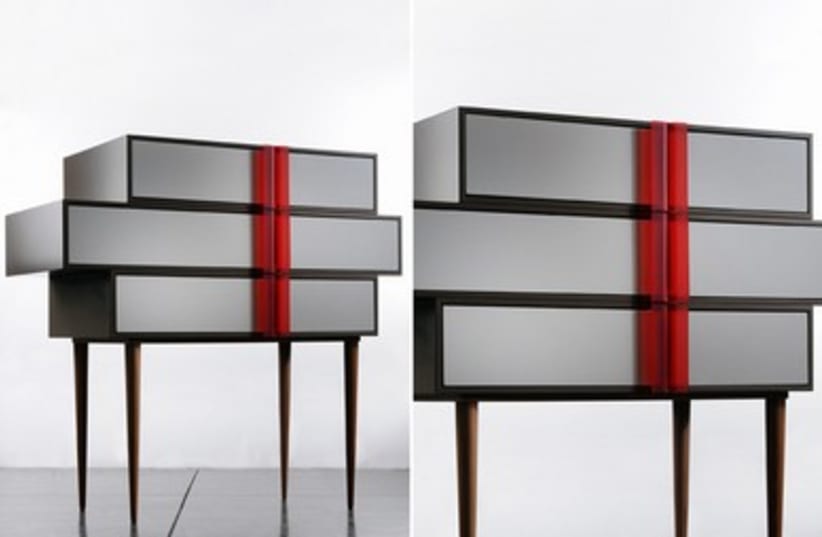
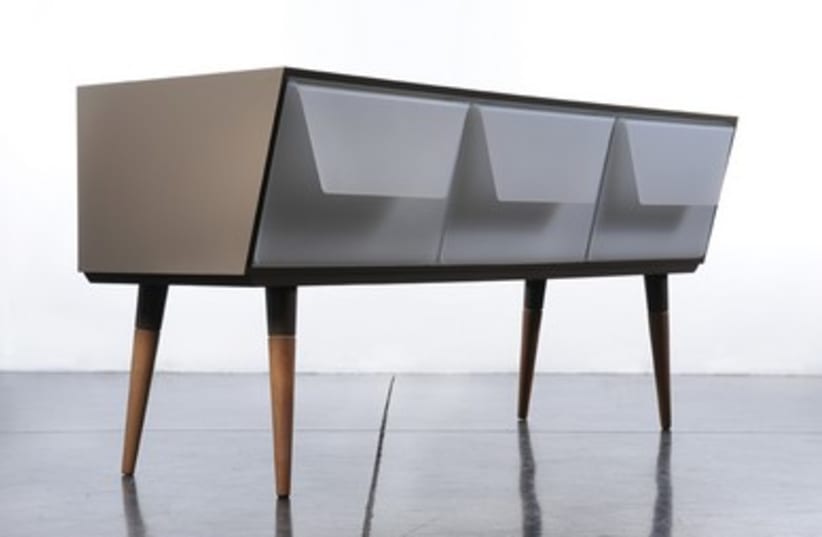

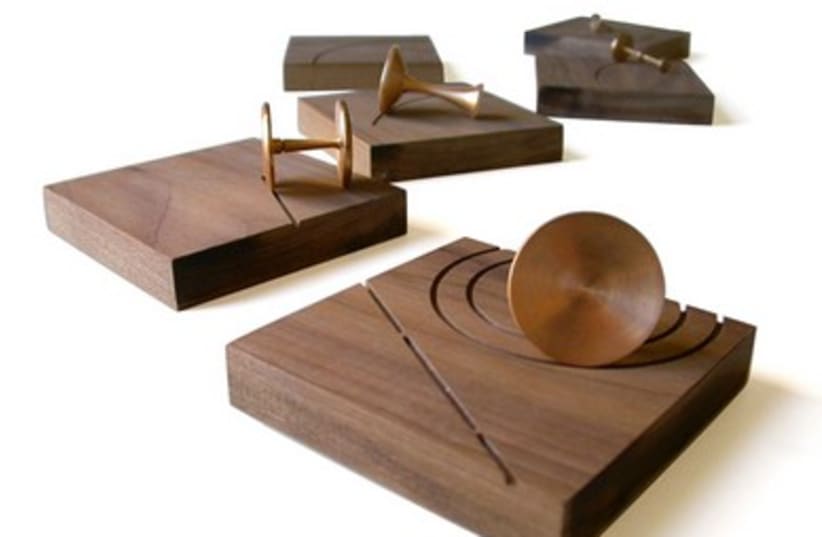
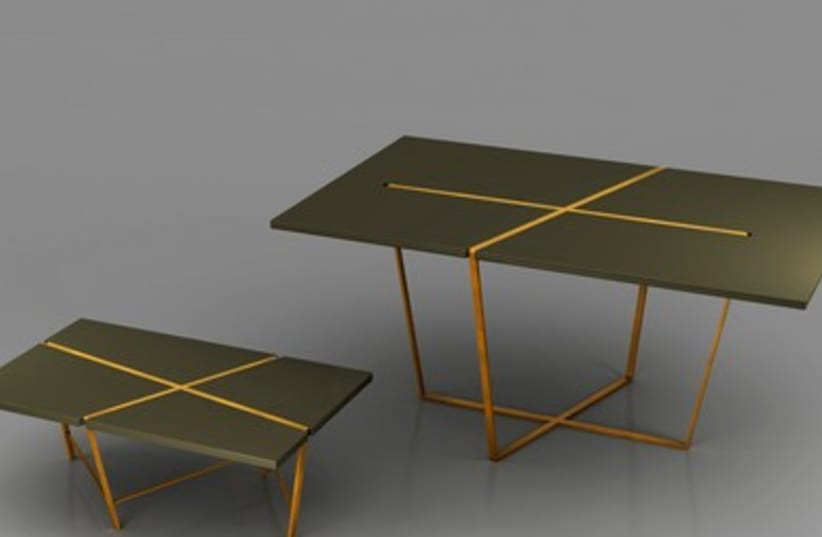


At some point Hagit decided that she had to follow in her grandparents’ footsteps and without even knowing a word in Italian, she packed her bags and moved to Milan, a city that tends to transform industrial designers into rising stars. There, out of her own comfort zone, she began to shine. She began creating furniture that leans on traditional craftsmanship, but at the same time uses contemporary technology. It seems as if Hagit enjoys playing hide and seek within her creations and it’s possible to see how smoothly she makes the transition between transparent and sealed materials. Can you explain a little bit about your background? I spent most of my childhood with my grandparents, which I believe is one of the greatest gifts I had. They used to own a small factory that made acrylic in Tel Aviv. At that time the area was crowded with artisans coming from Europe and I knew all of them. My grandparents divided the work between themselves; my grandfather used to produce the acrylic sheets, and my grandmother was the second part in the production chain, she gave life to the colorful transparent sheets, according to the needs and “trends” of the period. As a teenager I grew up in Holon and at high school I chose to study “Science” like a good little girl. It was then that I discovered that physics wasn’t for me. When did you first decide that you wanted to become a designer? During my mandatory service in the army I was fortunate to meet interesting people, who helped me realize that creativity should be part of my life. After the army I left for Paris to study a foundation year of art and design, which included graphics, three dimension conception and art history. There I felt “at home” and fell in love with design. Where do you live? What stands out about living where you are, and how does it affect your creations? I divide my time between Rome and Milan. My physical home is in Rome, and my “professional” home is in Milan, where I teach and have meetings with design companies for potential collaborations. These two cities are very different from each other, almost the opposite. Rome influences my work in a “romantic” way, while Milan is more bold and innovative. In order to survive in Milan one has to be professional. Being surrounded by artists that made it, I understand my goals more clearly and how I can reach them. Living simultaneously in two cities influences my creations: I think that it is a balance between nostalgic and a contemporary approach, some sort of new romantics. Give us a glimpse into a normal day in your life. If I am not in Milan, where I teach at the Naba Academy of Art, my day to day life is quite nice. I go out with my dog for half an hour in the morning and then go the neighborhood bar for a cappuccino. I then go back home, answer my students email’s and then start working on my designs. Can you briefly describe your process for creating a new design?I start with research for inspiration from the fields of art, architecture and fashion. Doing so, I start drawing all the ideas that come to mind, as many as possible. Then, I choose about ten which seem to me more interesting than others, and develop each one in a number of ways. I draw and create them at a 1:1 scale using cardboard, in order to feel and understand them better. Do you remember your very first commission?When I was a teenager, I insisted of creating my own furniture for my room. One of the projects was two chests of drawers, on which I worked very hard. I ran around from one craftsman to another, bending aluminum, cutting glass and making the handles as I had seen in my imagination. After a few years I felt that they didn’t reflect my spirit anymore and decided to sell them. My uncle offered me a very modest sum and since then I never saw them again.What are you most proud of professionally?Being precise and honest. It’s probably hard to pick, but do you have a favorite piece? I am not in love with anything that I do. On the contrary, I create something which I feel that reflects me in the moment that I create it. However, the Alma chair has a special place in my heart not for its beauty but because it represents how dedicated I was in order to give it life. It’s more symbolic to me than the actual piece. What are you really good at? What are you really bad at? I believe that I am good at creating interesting compositions. I am not as good at planning small details, sometimes practical ones. What do you do to stay inspired and motivated to create? I try to visit exhibitions at least once a month that lift my spirit and give me a boost of motivation to keep me exploring. Also, traveling abroad allows me to understand the various ways people live; this often creates a change in our perception of objects. Do you listen to music whilst you work? What’s playing in your studio right now?Yes, almost always. Most of the time it’s Jazz music. Which place in the world most inspires you and why? Japan, for their attention to detail and different point of view; and Paris, for managing to create with elegance and a contemporary approach. What are some other passions you have besides art and design? I enjoy going to the cinema, going to Jazz concerts and reading books. What challenges have you overcome as a designer? When first arrived in Italy I didn’t know a word of Italian. In a year and a half I managed to overcome the language barrier and started to teach at a university. It gave me the confidence to pursue other goals such as creating my own works and collaborating with design companies. What are your sources of inspiration? Modern and contemporary art.Could you share with us your progression as a designer, compared to when you first started out? How have you changed since then? When I first started I was working in a design studio. As the time passed I understood that I prefer to create my own designs. Moving to Italy gave me the opportunity to express design in another way. I pursued a Masters Degree in Design Management and collaborated with some Italian studios where my role was more a conceptual one, of constructing or improving a system or giving solutions. I believe that a major part of the design world will move towards to this approach. What advice do you have for young designers who want to follow your path?Follow your dreams at all costs. What was one of your biggest lessons learned since starting out?That having a dream is only the starting point; one has to overcome many barriers and disappointments along the way. I recommend to stop every once in a while and question yourself, if you still wish the same as before. What has contributed the most towards what you have achieved? The support of my parents and my partner. Where do you see yourself within the next few years? I don’t really know. If you weren't a designer, what would you be? A film maker. What are you working on at the moment? Some new furniture and two light fixtures. Describe one thing or person that has influenced your designs the most.Living in Denmark and having a great colleague at Bezalel, with whom I worked very often. Finally, tell us something no one knows about yourself. I am quite masculine in my approach, very practical and I don’t let emotional moods influence me. Einat Kayless Argaman founded DesignBreak in 2009 and since then has gained a large community of daily readers celebrating the design scene in Israel and beyond. Read Einat’s blog and follow her designed journey at http://www.designbreakonline.com/Follow @JPost_Lifestyle
